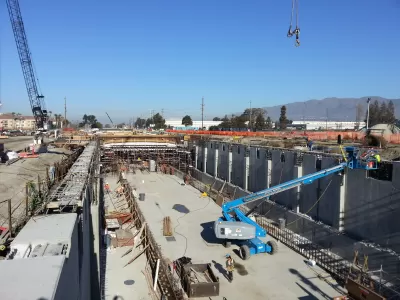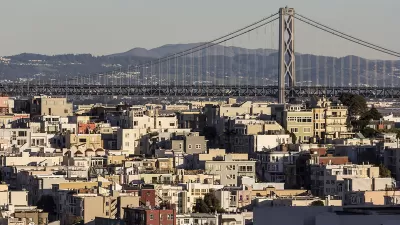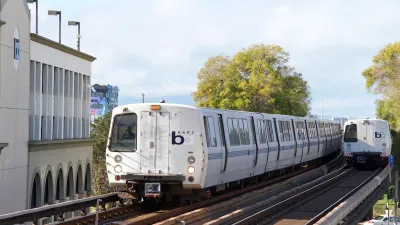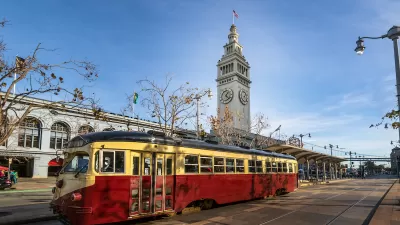The problem of expensive transit investments isn't unique to New York City.

One of the biggest transit and planning related stories in recent memory was an exposé by Brian Rosenthal about the excessive staffing, little competition, generous contracts and archaic rules are responsible for dramatically inflating capital costs for transit in New York.
Andy Bosselman has followed on that example and crunched the numbers of transit system investments in the San Francisco Bay Area, finding more disappointment for taxpayers and transit users.
When the Salesforce Transit Center opens in San Francisco this summer, a new tunnel will be needed to connect it to the current Caltrain terminus in SoMa. The project, known as the Downtown Extension, is estimated to cost $3 billion for each mile of subway, six times more than the average outside the United States.
The Central Subway, a 1.7-mile tunnel that will connect Chinatown to Fourth and Brannan Streets, is a relative bargain at $923 million-per-mile. But elsewhere in the world, new subways cost half as much.
As noted by Bosselman, when transit projects cost more, less gets built. If these prices stay high, the Bay Area will fall well short of the targets set forth by the Metropolitan Transportation Commission's Plan Bay Area 2040, as well as the full potential of a $21 billion funding promise by the nine-county region.
Bosselman relies on the research of Alon Levy, who also sits down for interview with Curbed about why transit investments are so expensive in the Bay Area. Levy's first point: that poor planning means local agencies spend billions on unnecessary infrastructure.
FULL STORY: Bay Area subway and rail costs: Why are they among the highest in the world?

Alabama: Trump Terminates Settlements for Black Communities Harmed By Raw Sewage
Trump deemed the landmark civil rights agreement “illegal DEI and environmental justice policy.”

Planetizen Federal Action Tracker
A weekly monitor of how Trump’s orders and actions are impacting planners and planning in America.

The 120 Year Old Tiny Home Villages That Sheltered San Francisco’s Earthquake Refugees
More than a century ago, San Francisco mobilized to house thousands of residents displaced by the 1906 earthquake. Could their strategy offer a model for the present?

In Both Crashes and Crime, Public Transportation is Far Safer than Driving
Contrary to popular assumptions, public transportation has far lower crash and crime rates than automobile travel. For safer communities, improve and encourage transit travel.

Report: Zoning Reforms Should Complement Nashville’s Ambitious Transit Plan
Without reform, restrictive zoning codes will limit the impact of the city’s planned transit expansion and could exclude some of the residents who depend on transit the most.

Judge Orders Release of Frozen IRA, IIJA Funding
The decision is a victory for environmental groups who charged that freezing funds for critical infrastructure and disaster response programs caused “real and irreparable harm” to communities.
Urban Design for Planners 1: Software Tools
This six-course series explores essential urban design concepts using open source software and equips planners with the tools they need to participate fully in the urban design process.
Planning for Universal Design
Learn the tools for implementing Universal Design in planning regulations.
Clanton & Associates, Inc.
Jessamine County Fiscal Court
Institute for Housing and Urban Development Studies (IHS)
City of Grandview
Harvard GSD Executive Education
Toledo-Lucas County Plan Commissions
Salt Lake City
NYU Wagner Graduate School of Public Service





























